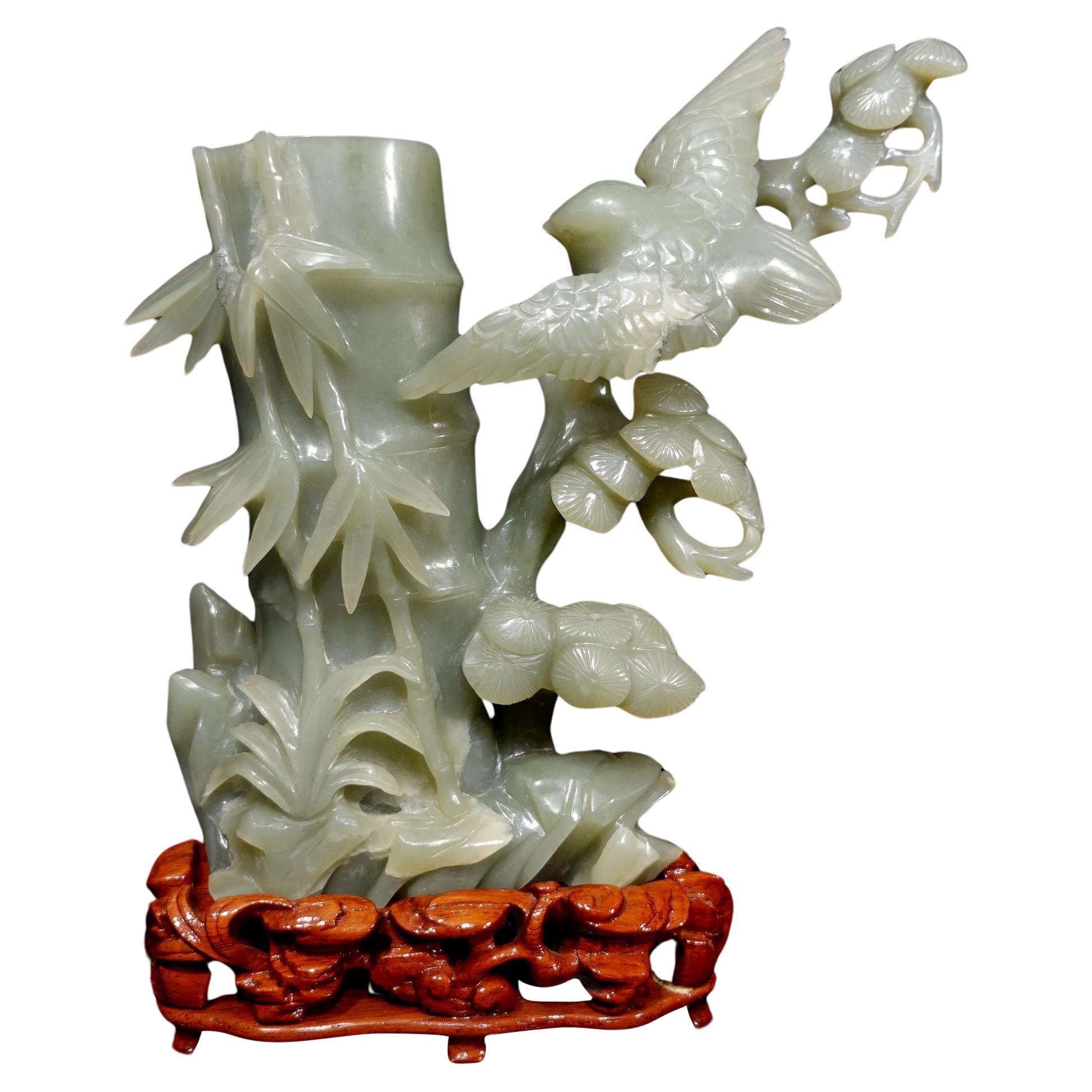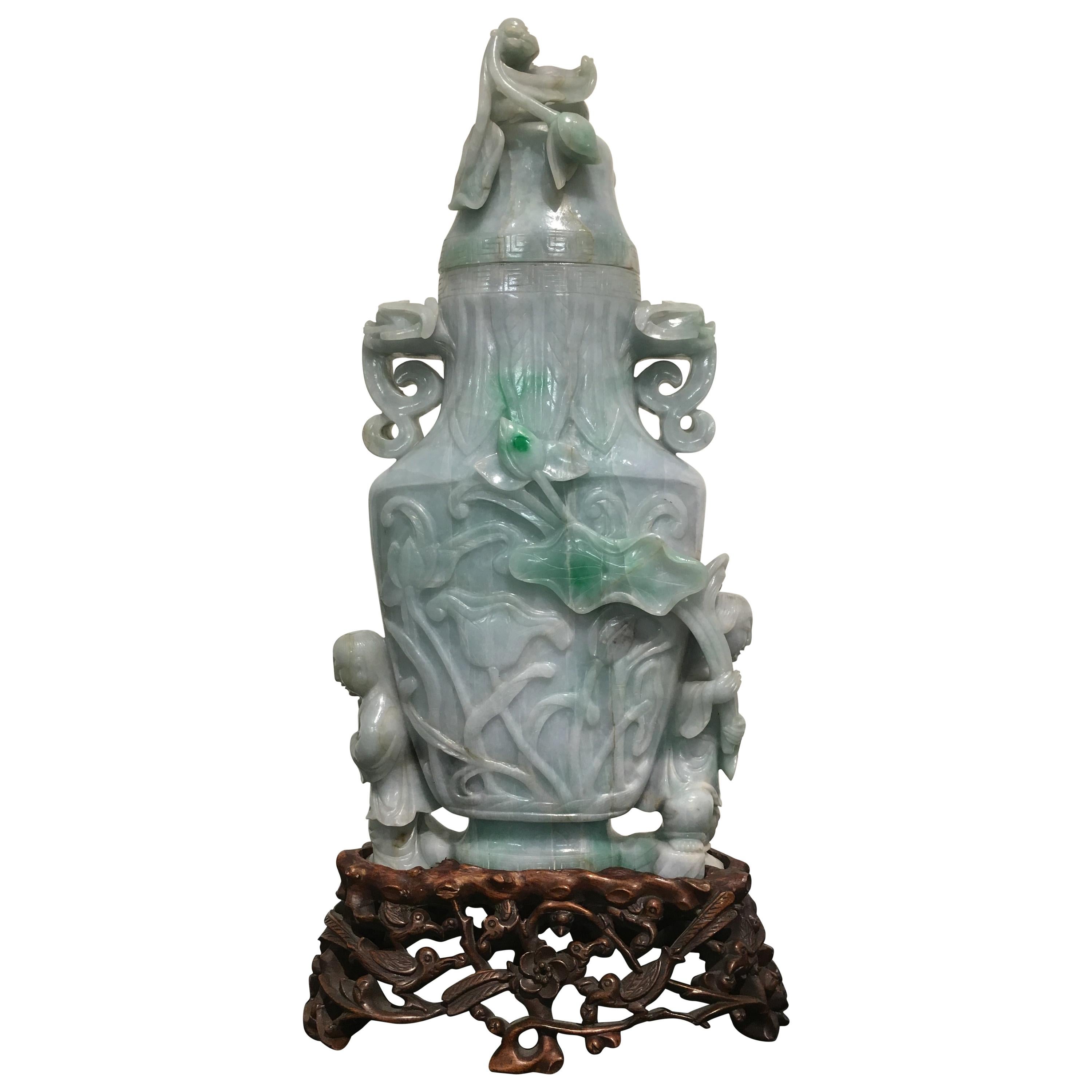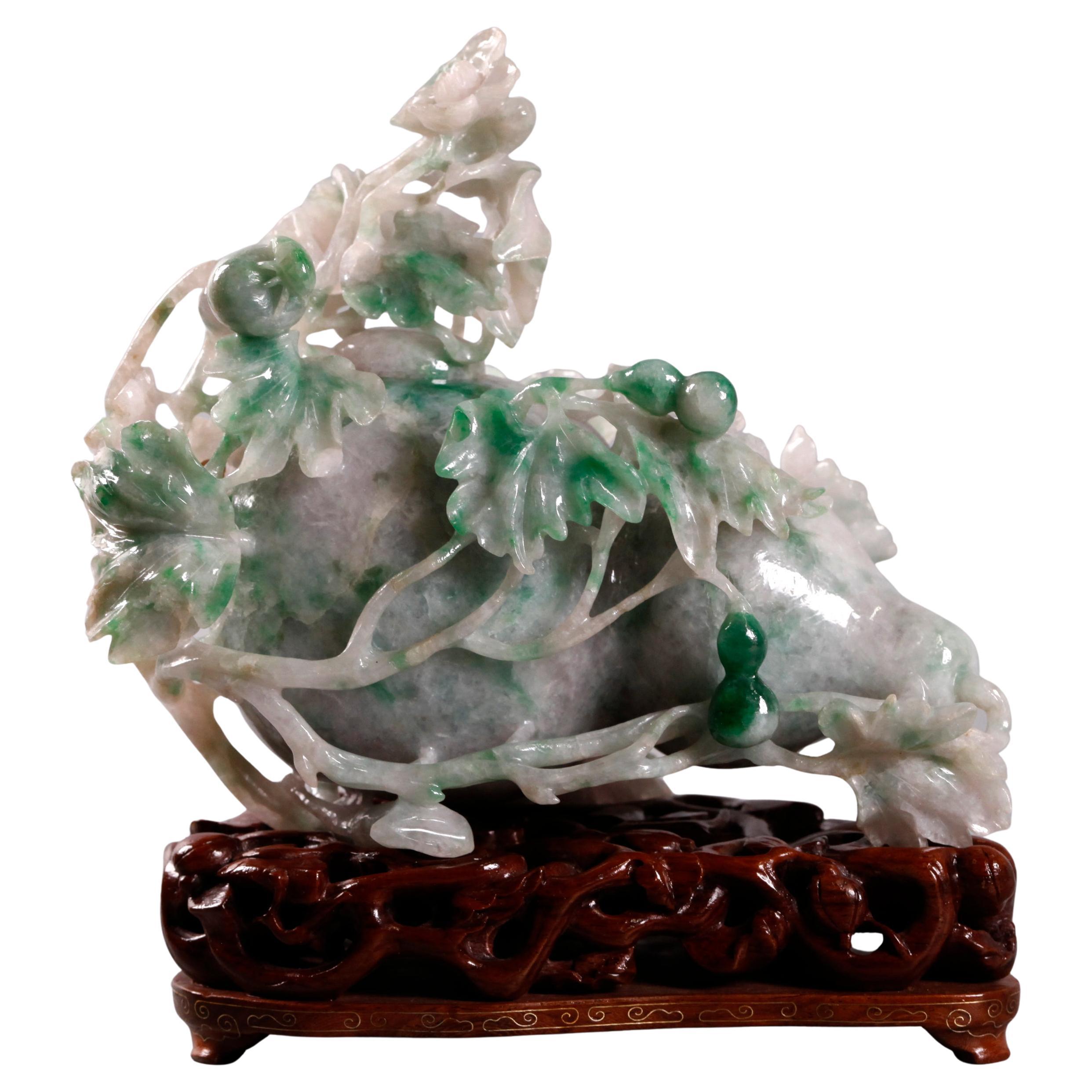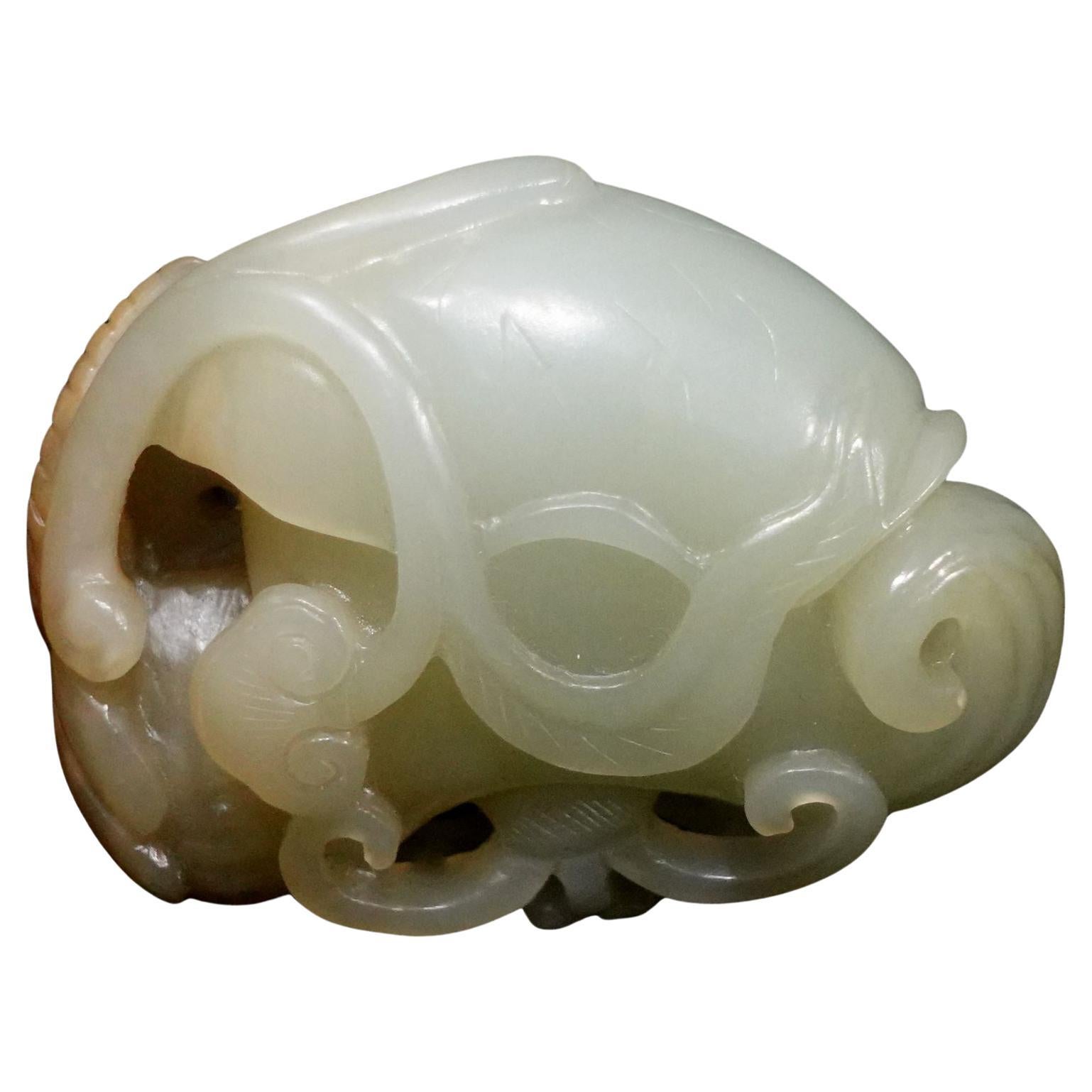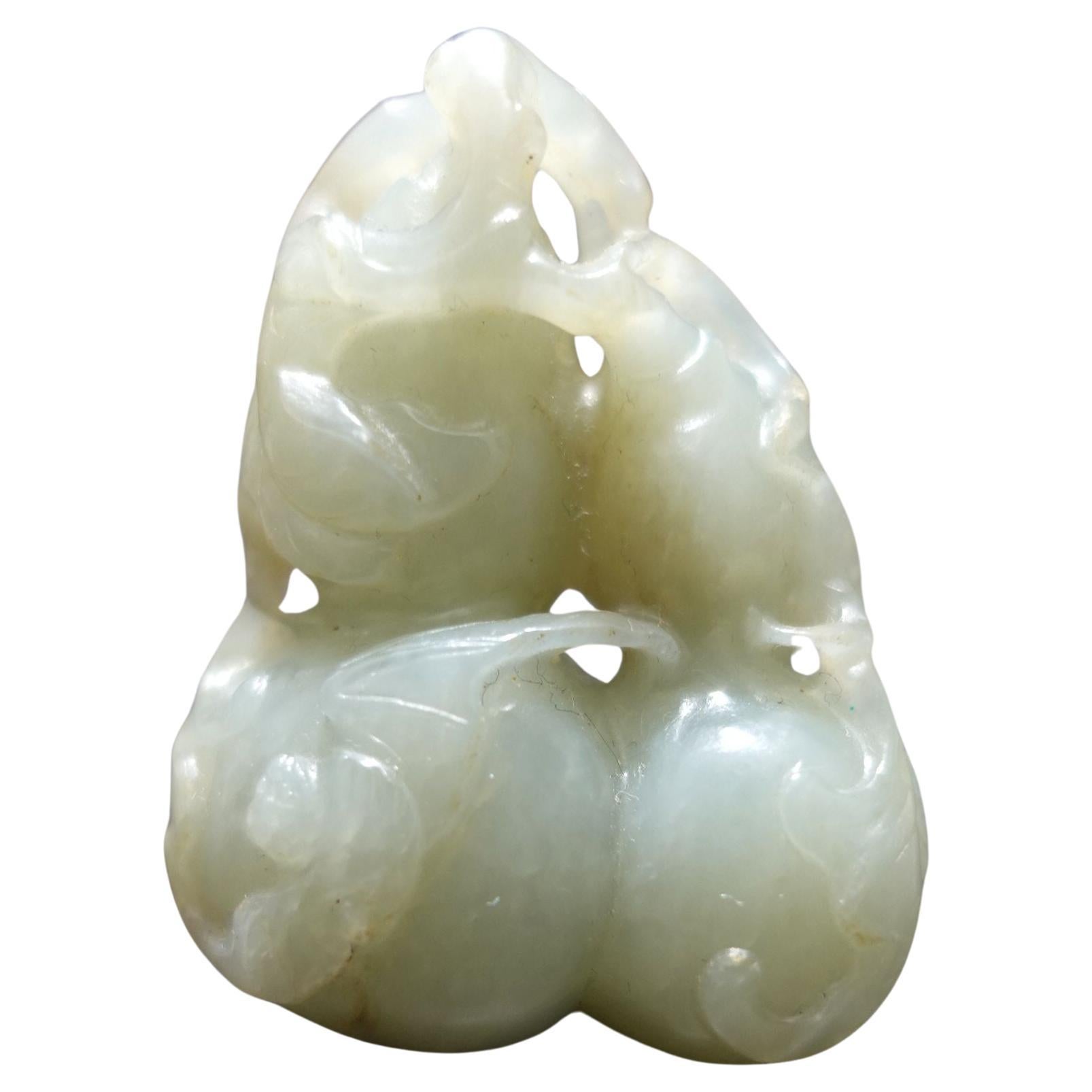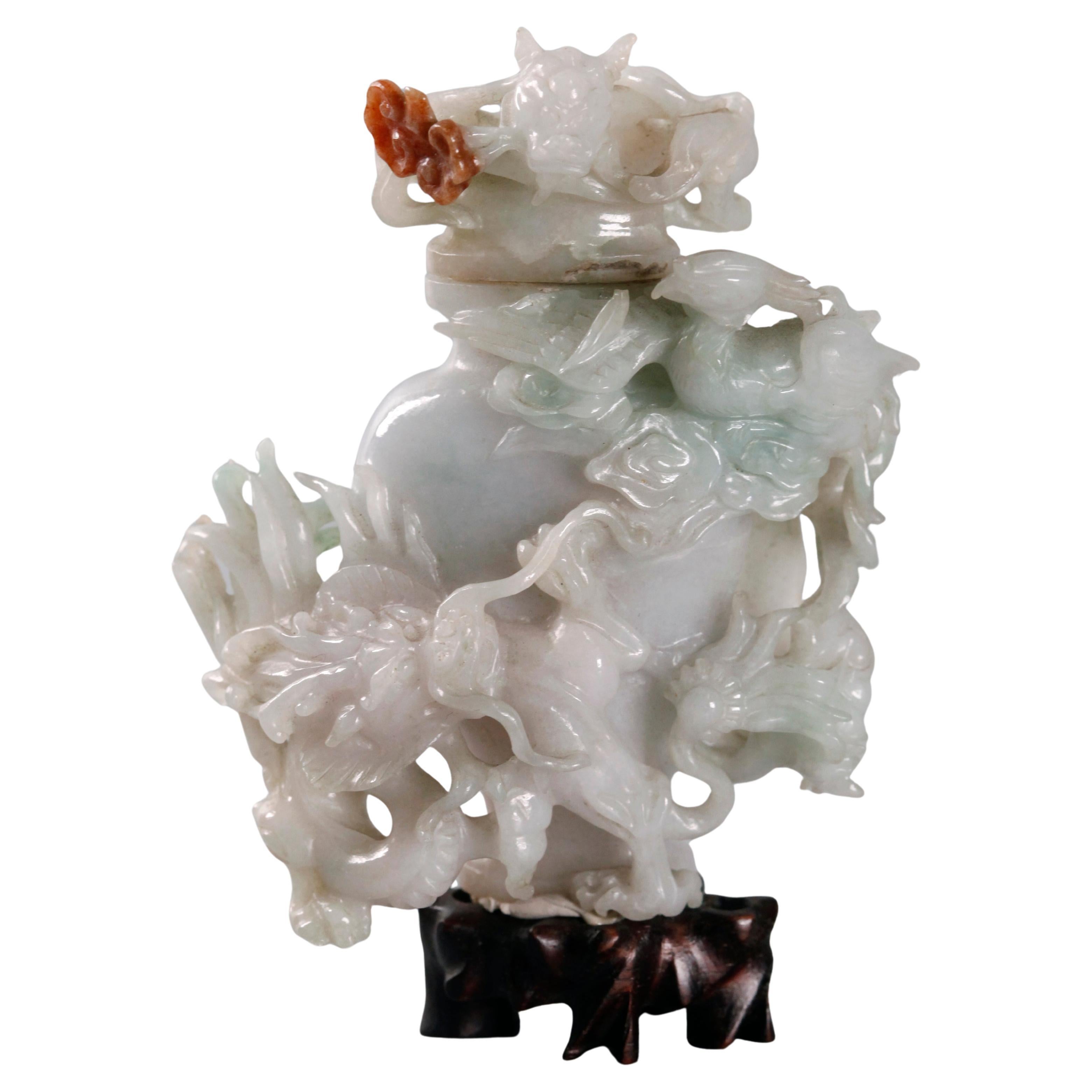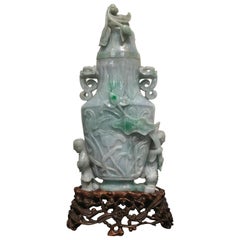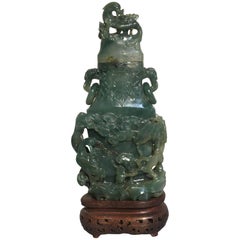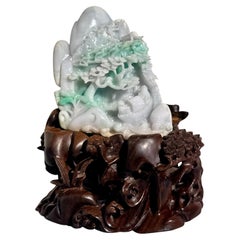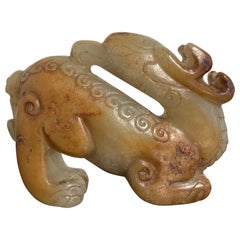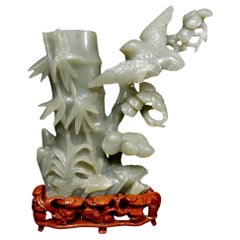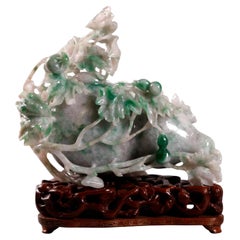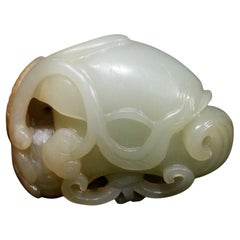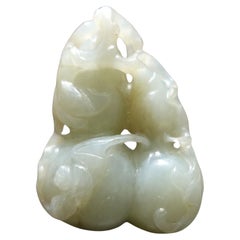Items Similar to Large Chinese Carved Nephrite Jade Double Buddha's Hand Vase, Late Qing Dynasty
Want more images or videos?
Request additional images or videos from the seller
1 of 19
Large Chinese Carved Nephrite Jade Double Buddha's Hand Vase, Late Qing Dynasty
$9,800
£7,362.03
€8,489.62
CA$13,598.78
A$15,111.24
CHF 7,918.45
MX$185,312.46
NOK 100,995.24
SEK 95,012.61
DKK 63,362.93
Shipping
Retrieving quote...The 1stDibs Promise:
Authenticity Guarantee,
Money-Back Guarantee,
24-Hour Cancellation
About the Item
A large and graceful carved nephrite jade conjoined double vase in the form of a pair of Buddha's hands fruit (finger citron), late Qing Dynasty, circa 1900, China.
The large and heavy vase carved from a single piece of celadon nephrite jade, with areas of lighter brown "sugar" skin. The vase ingeniously carved as a pair of Buddha's hand fruit, also known as finger citron, rising from a gnarled, leafy branch. The smaller Buddha's hand with a pair of bats. The Buddha's hands fruit with elegant and naturalistic curved "fingers". The "fingers wonderfully shaped and reticulated. The body of the fruit with simple stippling, in imitation of the textured surface of the real fruit. The interior of each fruit well hollowed and able to hold water.
Buddha's hands fruit are auspicious in Chinese culture. Their name in Chinese "Fo Shou" is a homophone for "Happiness and Longevity. They are often placed as offerings on Buddhist altars. Bats are also a homophone for the word "Happiness".
- Dimensions:Height: 8.75 in (22.23 cm)Width: 6.25 in (15.88 cm)Depth: 3.5 in (8.89 cm)
- Style:Qing (Of the Period)
- Materials and Techniques:
- Place of Origin:
- Period:1900-1909
- Date of Manufacture:circa 1900
- Condition:Wear consistent with age and use. No chips, cracks or repairs noted. Some dirt accretions in the recessed areas.
- Seller Location:Austin, TX
- Reference Number:1stDibs: LU894723414802
About the Seller
5.0
Platinum Seller
Premium sellers with a 4.7+ rating and 24-hour response times
Established in 2001
1stDibs seller since 2010
345 sales on 1stDibs
Typical response time: <1 hour
- ShippingRetrieving quote...Shipping from: Austin, TX
- Return Policy
Authenticity Guarantee
In the unlikely event there’s an issue with an item’s authenticity, contact us within 1 year for a full refund. DetailsMoney-Back Guarantee
If your item is not as described, is damaged in transit, or does not arrive, contact us within 7 days for a full refund. Details24-Hour Cancellation
You have a 24-hour grace period in which to reconsider your purchase, with no questions asked.Vetted Professional Sellers
Our world-class sellers must adhere to strict standards for service and quality, maintaining the integrity of our listings.Price-Match Guarantee
If you find that a seller listed the same item for a lower price elsewhere, we’ll match it.Trusted Global Delivery
Our best-in-class carrier network provides specialized shipping options worldwide, including custom delivery.More From This Seller
View AllLarge Early 20th Century Chinese Carved Jade Vase
Located in Austin, TX
A large and impressive Chinese caved jade vase, Republic Period, circa 1930.
Carved from one massive piece of jade. The vase carved with the He He Er Xian...
Category
Early 20th Century Chinese Qing Sculptures and Carvings
Materials
Jade
Chinese Carved Jadeite Vase and Cover, Qing Dynasty, Ex. C.T. Loo
Located in Austin, TX
A stunning carved and pierced Chinese jade vase, Qing Dynasty, 19th century. The vase is carved with a design of birds, flowers and trees, each rife ...
Category
Antique Mid-19th Century Chinese Qing Scholar's Objects
Materials
Jade, Silver
Chinese Carved Jadeite Boulder Grotto on Hardwood Stand, 20th Century, China
Located in Austin, TX
A fine Chinese carved grayish white and green jadeite (fei cui) boulder with a mountain and grotto scene, presented on a fitted carved nanmu hardwood stand, mid to late 20th century,...
Category
Late 20th Century Chinese Qing Scholar's Objects
Materials
Jade
Chinese Carved Celadon and Russet Jade Mythical Animal, Ming Dynasty or Earlier
Located in Austin, TX
A fine and unusual carving of a mythical animal, possibly a pixiu, of celadon and russet nephrite jade, Ming Dynasty or earlier, China.
The mythical animal masterfully carved as a...
Category
Antique 17th Century Chinese Ming Sculptures and Carvings
Materials
Jade
Chinese Yellow and Russet Jade Mythical Beast, Ming Dynasty or Earlier
Located in Austin, TX
A superb Chinese yellow and russet nephrite jade carving of a mythical beast, Ming Dynasty (1368 to 1644) or earlier, China
The mythical beast is portrayed with feline features, i...
Category
Antique 17th Century Chinese Ming Sculptures and Carvings
Materials
Jade
Chinese Hardstone Carved Mythical Beast Rhyton Vessel, 20th Century
Located in Austin, TX
An early 20th century Chinese Republic period carved hardstone drinking vessel, called a rhyton, in the form of a mythical pixiu.
The archaistic vessel carved in the Han Dynasty style from a single block of lavender gray nephrite and featuring a large horn-shaped cup being supported by a mythical pixiu. The pixiu carved with a nice sense of motion, head reared back, mouth open, and claws bared. The cup bearing a design of large horned taotie ogre masks on either side. The stone with areas of artificial "calcified" patination.
The pixiu is an ancient beast from...
Category
Early 20th Century Chinese Han Sculptures and Carvings
Materials
Jade
You May Also Like
Antique A Large Chinese Carved Hetain Jade Flower Vase w/ Stand and Box
Located in Norton, MA
Antique A Large Chinese Carved Hetain Jade Flower Vase w/ Stand, depicting pine trees, bamboo, and birds, raised on a wood stand with the original box, 20th C.
-Dimensions and Densi...
Category
Early 20th Century Chinese Other Sculptures and Carvings
Materials
Jade
Chinese jade carving of a double gourd form cover jar
Located in New York, NY
jade with apple green and russet tones; jade carving on fitted wooden base; measurements of jade carving only: 5.5in(H) x 6in(W) x 4in(D); overall measurements with wooden base: 7i...
Category
Mid-20th Century Chinese Sculptures and Carvings
Materials
Jade
Antique Chinese Carved Hetain Light Celadon/ White Jade, 19th Century
Located in Norton, MA
Antique Chinese Carved Hetain Light Celadon White Jade depicting dragonfly and ruyi on a lotus leaf. Good use of russet skin coloring, 19th-century.
-Dimensions and Density-
Jade:
...
Category
Antique 19th Century Chinese Other Sculptures and Carvings
Materials
Jade
Antique Chinese Carved Hetain Celedon Jade "Double Gourd" 19th Century
Located in Norton, MA
Antique Chinese Hetain Celedon Jade "Double Gourd" from the 19th Century.
The hand-carved loverly gourd shape group with the intricated flora wrapping the gourd. The color is present...
Category
Antique 19th Century Chinese Other Sculptures and Carvings
Materials
Jade
Chinese jade cover vase
Located in New York, NY
vase is carved with a dragon and a phoenix in high relief; cover is carved with a dragon in high relief; jade with russet tones; 1.5in(D) x 3.5in(W) x 4in(H) are the dimensions of th...
Category
Mid-20th Century Chinese Sculptures and Carvings
Materials
Jade
$1,200
Intricately Carved Celadon Jade Dragon Handled Covered Vessel
Located in Lambertville, NJ
Early 20th Century intricately carved celadon vase with lid. The moon flask shape with dragon handles with rings. Incised on both sides with archaistic v...
Category
Early 20th Century Chinese Qing Sculptures and Carvings
Materials
Jade
More Ways To Browse
Antique Hand Vase
Buddha Hand
Hand Of Buddha
Large Jade
Chinese Carved Jade
Buddha Hand Sculpture
Chinese Buddha
Water Jade
Carved Buddha Hand
Qing Dynasty Vase
Nephrite Jade
Chinese Jade Carvings
Chinese Hand Carved Vases
Carved Jade Sculpture
Large Chinese Carved Sculpture
Large Buddha Hand
Carved Nephrite
Chinese Carved Buddha
